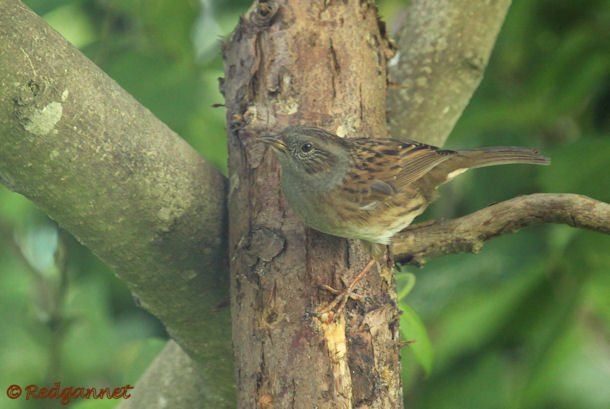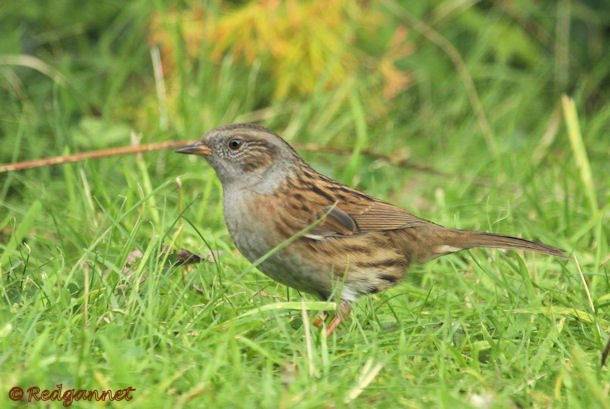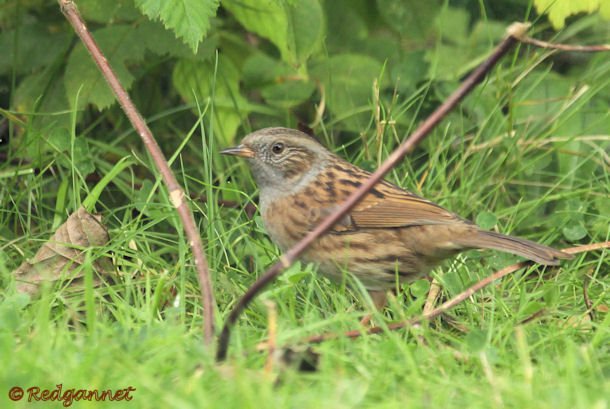
This is a Dunnock. It does not usually rate high on peoples’ Western Palearctic wish-lists, but Prunella modularis is a dapper little bird with some fascinating habits.
Of olde, it was known as the Hedge Sparrow to separate it from the House and Tree Sparrows. Now it is classified with the Accentors. Confusion with the sparrows is understandable, given the plumage and their tendency to feed from the ground. The Dunnock though, has a grey face and breast and a much finer, sharper bill. Familiarity makes them easy to separate from the sparrows, even at a distance.
They are usually seen singly or in pairs, but they sometimes form loose alliances whilst breeding. One male may mate with a number of females and a female may have multiple liaisons. Occasionally they might form a commune.
A male Dunnock, keen to ensure that any progeny will carry his genes through to the next season can cause a female to eject sperm from a previous mating with a rival male. He does this by pecking her cloaca which stimulates her to discard the early bird’s packet of potential.
This gives the female an advantage by allowing her to accept a “provisional mate”, but retaining the opportunity to take advantage if a better suitor should appear. In such cases, the spurned donor has been observed helping to raise the brood. It has been suggested that the female could select her provisional male on his ability to provide for a brood of chicks. Then,whilst he is decorating the nursery, she exchanges his genetic gift for a superior offering to ensure stronger chicks.
So there may be duplicity in the Dunnock household, but even the female can’t be sure whose chick she is raising. She may have laid the original eggs into the low, cup-shaped nest, but Dunnocks are frequently parasitized by cuckoos which replace one of the eggs with a ringer.
















It’s probably the only accentor many people ever see! They’re rather noticable at the moment in New Zealand, singing their hearts out.